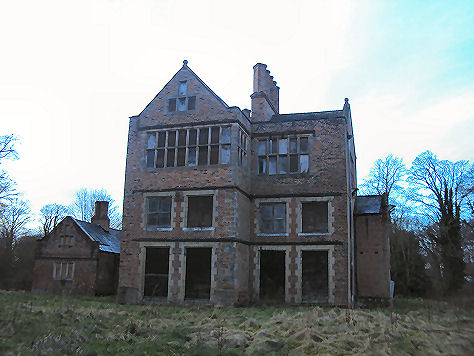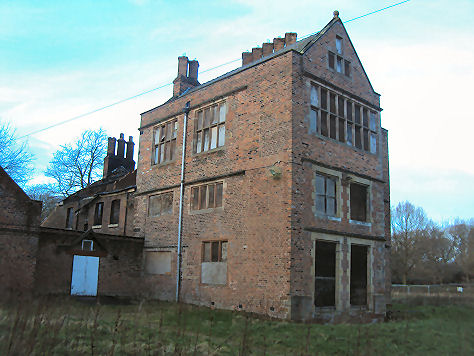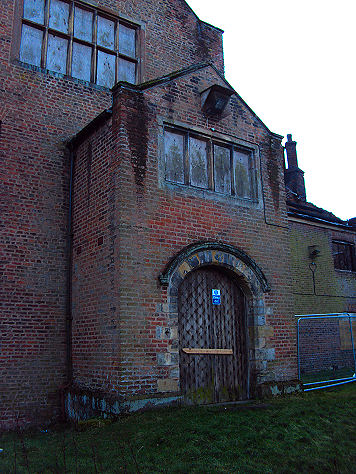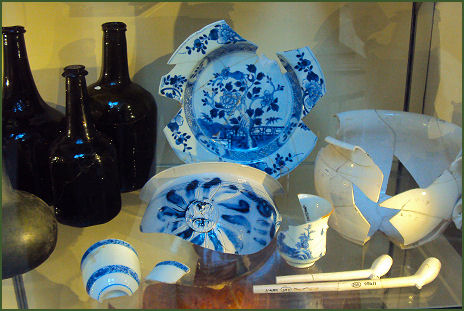Bewsey Old Hall
Bewsey Old Hall is situated at Great Sankey, Warrington, on the western side of the Sankey Valley Park. The name Bewsey comes from the Norman French 'beau see' meaning beautiful site.


 A monastic grange, owned by the monks of Titley Abbey, in Essex, previously occupied the site. Bewsey Old Hall and estate was home to the Lords of Warrington from the thirteenth to the seventeenth century. The Boteler family were Lords of the Manor of Warrington from the time of King Henry III until Elizabethan times.
A monastic grange, owned by the monks of Titley Abbey, in Essex, previously occupied the site. Bewsey Old Hall and estate was home to the Lords of Warrington from the thirteenth to the seventeenth century. The Boteler family were Lords of the Manor of Warrington from the time of King Henry III until Elizabethan times.
The present hall is a brick built, three storey, mainly Jacobean building, incorporating or reusing elements of a former medieval hall. The original fourteenth century moat only partly holds water today. The building has distinctive chimneystacks and stone mullion windows which are most likely the work of Sir Thomas Ireland and date back to around 1600. Sir Thomas was knighted at Bewsey by King James I in 1617, the king later stayed the night at Bewsey.
The hall was much enhanced in the seventeenth century by the creation of a formal terraced garden furniture, although the terracing had been levelled by 1724. Bewsey's remaining medieval structures were demolished during the eighteenth century, when the hall was extended, and landscaping works filled in parts of the moat and enlarged others as water features.
In 1863, Bewsey Old Hall was left in the hands of tenants. By the 1920s, the house was bordered by a new housing estate , in i974 in a state of considerable disrepair, it was acquired by Warrington Development Corporation.
Archaeological excavations carried out in the 1980s revealed what is thought to be the earliest residence at Bewsey, a hunting lodge which was developed into the Boteler's medieval hall. Many artefacts were discovered during the excavation of the site including a medieval leather shoe, pottery, coins and a seal die from the fourteenth century bearing the impression of a rabbit. The nearby yew maze in Sankey Valley Park has a statue of Lady Isabella, wife of the 12th Baron. A mosaic effigy of her son, Sir John, lies nearby. The excavation also found evidence of the walls of an ornate seventeenth century terraced garden. The remains of over 20 highly decorated urns which once stood on the wall had fallen into the moat as it silted up. At the front of the hall were wall foundations and semi-circular steps.
The building is said to be haunted, tales of a ghostly white rabbit being chased by a pack of hounds are thought to have inspired Lewis Carroll, who lived at nearby Daresbury.
Efforts to preserve the building date from the mid-1980s, structural conservation work was carried out but in 2000 but an attempt to save it with lottery cash was abandoned. In September, 2011, the hall was subject to an arson attack, and lost part of its roof. Despite local campaigns against it, a public inquiry, held in May and September of 2011 granted permission for seven flats to be built in the grade II listed hall.
The owners of Bewsey Old Hall
Bewsey Old Hall has been home to some important aristocratic Cheshire families as well as being visited by royalty.
The house was in the possesion of the Boteler family from the 1260's to 1586. William Fitz Almeric le Boteler (born circa 1228) constructed the first hall to occupy the site, a single storey wooden medieval hall, of which nothing now remains. In the late sixteenth century this was replaced in brick. The founder of the Boteler line was one Robert de Boteler of Chester (born around 1105) who held the position of butler to Ranulph de Gernon, Earl of Chester, and therby acquired the surname Boteler. His son Richard obtained the Lordship of Warrington by his marriage to Beatrice, the daughter and heiress of Matthew de Villiers of Warrington. The barony was first formed in the reign of King Henry I, for Pain de Vilers.
Sir John Boteler, Lord of Warrington, was murdered in his bed in 1521 at Bewsey Hall, the murderers acting on the orders of his brother-in-law, Lord Stanley, with whom he had been on bad terms for some time. Sir Piers Legh and Sir William Savage, whom Stanley had employed to carry out the deed, bribed the porter at Bewsey to place a lighted taper in a certain window when the house had settled down for the evening. They then crossed the moat in a coracle like boat and stole into Sir John's bed chamber, a struggle with the chamberlain ensued who was also murdered. They later hung the treacherous servant from a tree in the Bewsey estate, so that he could not give evidence against them.
The wealthy Sir Thomas Boteler, the 17th baron, converted to Protestantism, acquired the position of County Sherrif and in 1577 was knighted. His son Edward Boteler spent the family fortune in London, in the company of Robert Dudley, a favourite of Elizabeth I. On the day his father died, Edward stormed the hall to seize the property from his sister and stepmother. Edward Boteler died in 1586 without an heir. Bewsey Old Hall then passed to Robert Dudley, Earl of Leicester, to settle Edward Boteler's gambling debts. Dudley sold the estate to lawyer Thomas Ireland, of Childwall, and the first Stuart king, James I was his guest there in 1617, when he knighted its owner. The house remained in the possession of the Ireland family for six generations until 1675.
China and glassware from Bewsey Old Hall

Bewsey was inherited by the Atherton family in 1675, although it was not their main home. In the mid eighteenth century they added a new wing to the building. Legend states that the Stuart prince Bonnie Prince Charlie stayed the night there, on his retreat from Derby during the 1745 campaign. The house passed by marriage to the Lilford family in 1797, who demolished the eighteenth century wing, they also built a new hall in the grounds and turned the old hall into two farmhouses which were let to tennants. Warrington New Town Development Corporation purchased the house from Lord Lilford in 1974.
